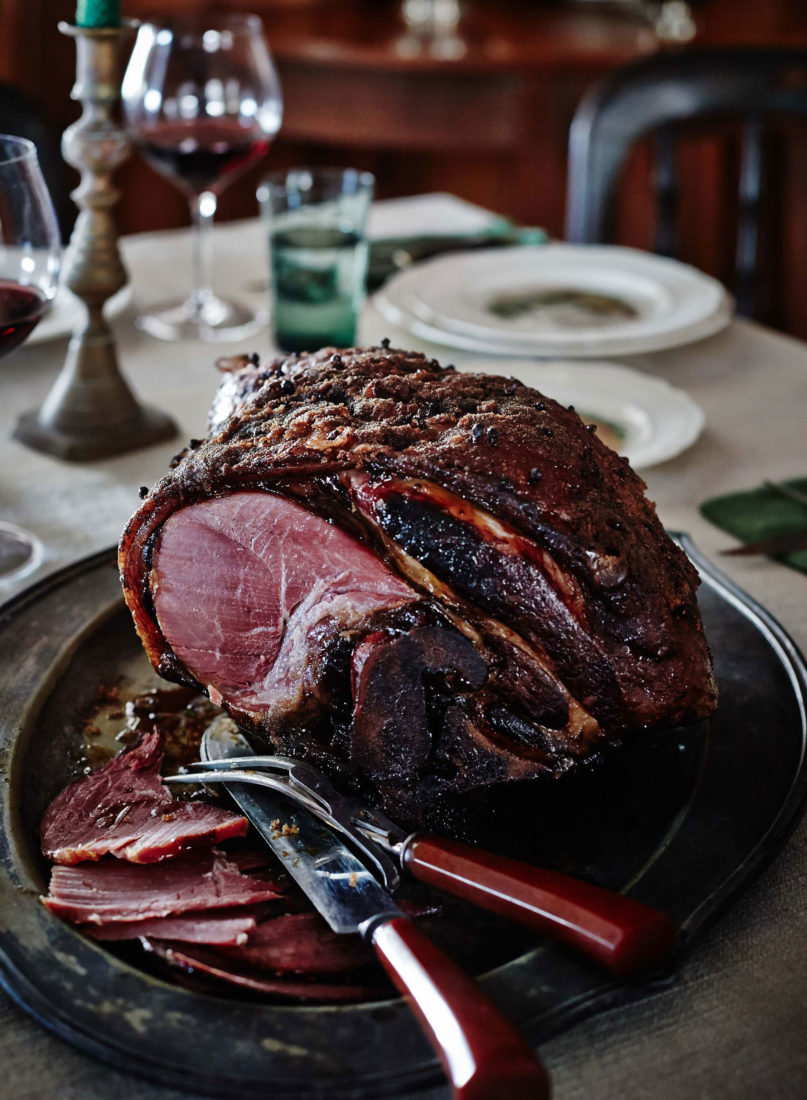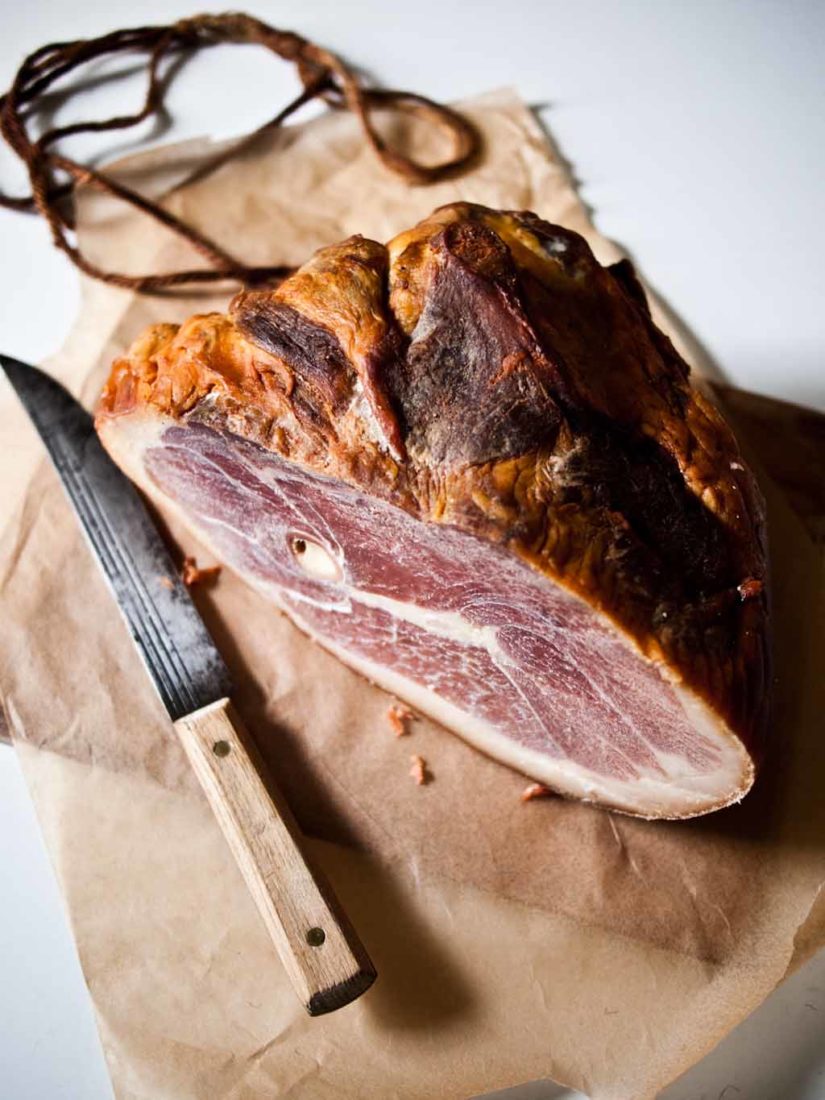Honey baked or country smoked, ham likely sits at the center of the post-church table if you’re celebrating Easter in the South.
Most Easter-celebrating countries in the world roast a leg of lamb—Britain’s classic interpretation is served with mint sauce—instead of popping a pig on a platter. What’s with the Southern United States’s porcine predilection? Sitting at the heart of the so-called Ham Belt has something to do with it.
It’s not hard for third generation curemaster Sam Edwards, owner and president of Edwards Virginia Smokehouse, to imagine country ham—a Southern delicacy since practically day one of this country’s existence—making early American Easter tables. It was all a matter of timing.
“You harvest the hogs as early as December, so by the time you put them in cure, they were coming out in say January, February, then you would smoke them—so the first edible hams would be getting ready by Easter,” Edwards says. “I think that’s why people, in Virginia at least, eat ham on Easter.”

Virginia, of course, did have sheep. Kentucky and Tennessee did too. “But the need for good grassland for pasture was always an issue in the South outside Virginia and the Bluegrass,” says David Shields, a University of South Carolina distinguished professor and food historian. Westward expansion didn’t help either. With its better grazing land, the sheep industry eventually moved away from the East Coast, taking dinner with it.
Wool production also affected lamb prices, says Robert Moss, a food historian and the author of Barbecue: The History of an American Institution. “Lamb prices fluctuated a lot more year to year than beef and chicken,” Moss says. And Americans just never developed a strong taste for lamb. “Even back in the early twentieth century there were lots of articles written asking, ‘What can we do to make Americans eat more lamb?’” The answer? Not much. Southerners’ palates, at least, were primed for pig.
We have generations of pitmasters and cooks and chefs to thank for that, from James Hemings, an enslaved cook at Monticello who was the first American to train as a chef in France and who baked Virginia hams; to twentieth century chefs like Edna Lewis who was known to always keep a bit of country ham handy to perk up greens; to today’s barbecue barons, including pitmaster Rodney Scott, who schools Southerners in the beauty of cracklins and pulled pork. Which is to say, the question isn’t why eat ham on Easter? It’s why eat anything else?

Today, Americans eat a fraction of a once healthy mutton diet. In the early 1960s, Moss says the average American ate four to five pounds of lamb per year. By 2011, it was less than a pound. So naturally we turn to the familiar ham to go with our deviled eggs, carrot cake, and macaroni and cheese on Easter. The spread might include honey baked ham with citrus glaze, spiral cut holiday ham, or the old school pineapple glazed ham, the result of a 1925 push by the Hawaiian Pineapple Packers Association to convince home cooks to add the exotic fruit to savory dishes—a marketing win only topped by Jello’s shrimp aspic campaign. And then there’s the awe-inspiring, singularly Southern union of booze and soda and sow that just might be coming to an Easter table near you: Cheerwine Bourbon glazed ham. Eating high on the hog indeed.








